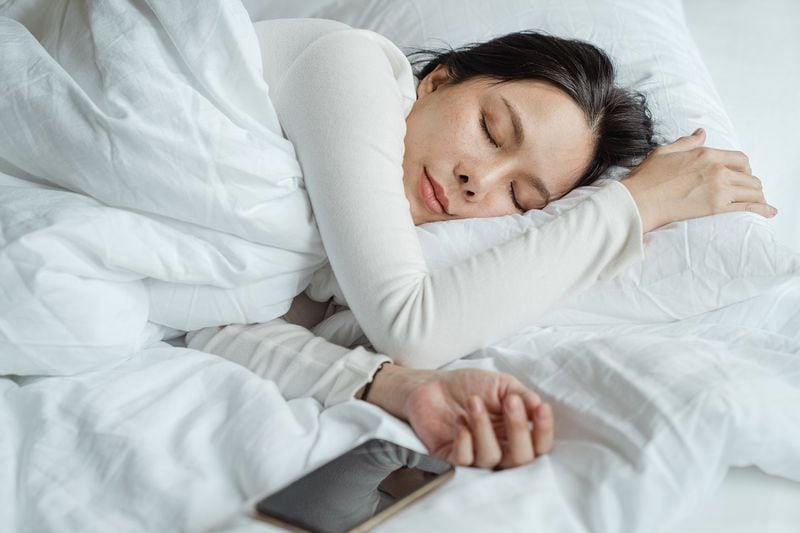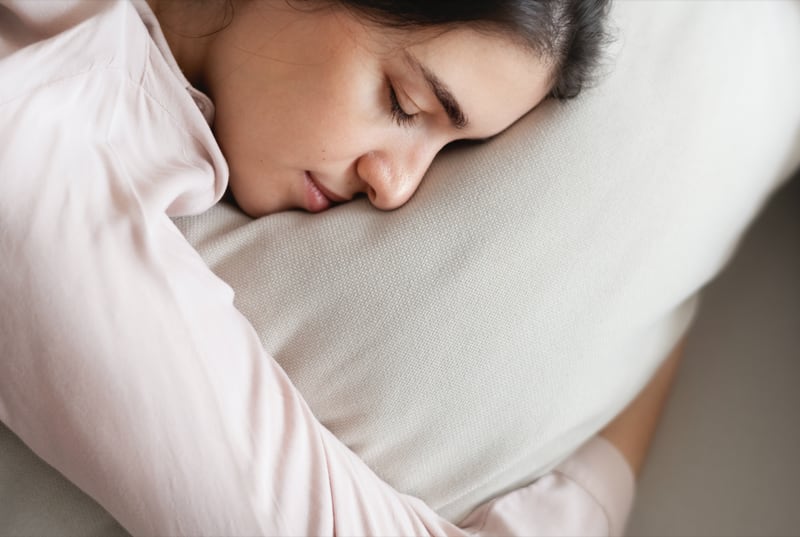A nap can be a tempting move after you haven’t had a restful sleep. Here’s what you need to consider about these short sleep periods before including them in your routine.
You may have spent very few hours on sleep due to work, study or late cell phone use. Or maybe you’ve had enough sleep, but you’re not feeling as rested as you should. In other cases, you might simply feel tired in the middle of the day because you had very busy commitments to complete in a short time.
If at some point you were one of these alternatives, chances are a solution has crossed your mind that is hard to miss in those sleepy moments: take the time to take a snap in the middle of the routine
According to experts, a rest of this type serves to feel less tired and to continue other activities that we need to do in the rest of the day. But you should also pay attention to some considerations about naps before taking them.
How much can a nap help after a bad night?
Getting a good night’s sleep every day, at the right time, brings multiple benefits that could perhaps go unnoticed by the naked eye.
Decreased cardiovascular disorders, reduced risk of heart and brain infarction, regulation of body weight and blood sugar are just some of the benefits that quality sleep attracts in the short and long term, says Evelyn Benavides, neurologist at Bupa Clinic Sleep. Center.
While for Fernando Schifferli, neurologist at IntegraMédica, having restful sleep promotes the restoration of “memory, emotions and concentration. Many attention deficits are due to the fact that the proper sleep phases are not respected, nor the time” .
Do you have trouble sleeping? Study links lack of deep sleep to poor brain health
Likewise, different studies have explored that sleeping well is closely linked to an increase in the quality of life and, at the same time, the number of years we can live.
When a restful sleep is not felt due to different factors, it is the next day that the ravages begin little by little: irritability, fatigue, decreased attention span, low productivity, or daytime hypersomnolence.
Amidst this cluster of symptoms, the alluring presence of a nap emerges. Although one might think that this practice can reduce lack of sleep at night, experts say that is not the case. It also can’t spare you the health risks that frequent sleep loss can leave in the long run.
“It doesn’t make up for it, but it would help us have better execution of the tasks I do during the day if I wasn’t sleeping well” says Gabriel Abudinén, a neurologist specializing in sleep medicine at the University of Chile Clinical Hospital.

Dr. Benavides agrees with the above. “They do not replace poor quality at night, the truth is that they allow you to end the day better, but they should not be needed every day, only once in a while.”
While it’s clear that a nap doesn’t make up for the previous night’s poor sleep or add hours to later rest, it does have some day-to-day benefits. According to the Mayo Clinic, Incorporating this custom can bring benefits such as improved performance and memory, relaxation, reduced fatigue, and improved mood.
For Fernando Molt, neurologist especialista en sueño del Hospital de Coquimbo y académico de la Universidad Católica del Norte, to start a tiempo to una siesta puede ser bastante útil, siempre que no quit ciclos del sueño nocturno, pero eso no significa que tendrá la misma función for all people.
“There are those who sleep during the day, disconnect them a bit and feel more tired than before. It’s very genetic and a habit”.
How much time should I spend napping and why?
There’s a common thread between all the specialists about the approximate amount you should spend on your naps, if you plan to take one at this exact time. It’s not an hour or two, but the recommended thing is to take 20-30 minutes.
And if I sleep much longer than that, what could happen?
Before tackling this question, we need to understand how sleep works when the day is over and we turn off the lights in the room to start resting. Dr. Abudinén states that this state is divided into several phases. Once the person becomes drowsy and the body begins to relax, the superficial stages of sleep begin, which correspond to N1 and N2.
Is one eye twitching? These are the possible causes and factors you should be concerned about
Soon after, the deep sleep stage develops, i.e. N3. All are part of what is called non-REM sleep (rapid eye movements).
“When there is already a drop in temperature, the so-called REM sleep is due to the rapid eye movements that are linked to the moment when one is already dreaming”, underlines the specialist. “We typically have three to five cycles of all of these stages overnight.”
If you are one of those people who take multi-hour naps, what will start to happen is that the brain will initiate the same biological processes that it usually develops at night. Therefore, when the hour of the night’s rest really arrives, falling asleep will become an arduous process to achieve.

“The schedules will be exceeded and it will be more difficult to fall asleep, in addition to the fact that the quality of sleep that night will be worse,” says Dr. Benavides.
If a person experiences a lot of sleepiness during the day and takes naps that last several hours, that’s an indicator that something is wrong with the metabolism, says Dr. Schifferli.
“Excessive wakefulness at night, as well as excessive sleepiness during the day, are not normal episodes” warns the specialist.
Since it is normal for a nap to not go through the same sleep cycles as at night, by definition certain types of dreams should not occur during this time.
Here’s how Dr. Molt puts it: “In 30 minutes, you should not reach the dream phase. If this happens, it means my body is so tired that it is looking to dream even during this time.” .
The best (and worst) time to take a nap
What is repeated most often is that those who choose to sleep during the day do so during daylight hours, although there are also cases where the desire to fall asleep can appear suddenly at nightfall. at night, for example after completing a busy task. schedule of commitments and there are still more to do at night.
In this context, it must be clear that it is not the same to take a nap at any time of the day, since there are specific times when it is much more advisable to do so compared to others.
According to experts in this field, the times after lunch are when cognitive abilities and concentration tend to decrease. Therein lies the specific time when you could take a short nap, following the amount suggested by the doctors.
“It’s more or less obvious that people are having lunch and in the first hour of the afternoon we’re a bit more tired. This is why it is recommended that people take their nap at this time” says Dr. Molt.
While Dr. Benavides assures that it should not be done after four o’clock in the afternoon as it can have greater effects at night.

Just as there is a slightly more recommended time to close your eyes and rest, there are also others that are almost “forbidden”, Molt points out.
“The first is between 10 and 11 a.m., since we all have very active waking hormones, so it’s harder to coordinate a nap. It is possible if there is sleep, but it is more complex” .
The second, not very recommended, hour is approximately at 8 p.m., where peak body temperature occurs. “It also makes it a little more difficult to fall asleep,” says the expert.
Since daytime sleep should be superficial, it is necessary to clarify that it does not require exactly the same routines that are performed to prepare for nighttime sleep, for example, lying on a bed, in complete darkness and in pajamas.
“The sleep cycle is not going to last more than 30 minutes, so it can be done anywhere, whether it’s an armchair, on a couch or in bed” explains the neurologist.
While gaining a few minutes to close your eyes throughout the day may be a viable option in some settings, those who choose to do so should aim to improve their nightly sleep cycle rather than artificially trying to improve it by nap, experts say. Especially if this behavior occurs repeatedly over time.
And it is that if we present a lot of sleepiness, we see sleeping in the middle of the routine as something very obligatory to perform and it costs us too much to be productive in our activities, it is best to consult your family doctor or a specialist in this field.
Only in this way will it be possible to determine the possible causes that cause insufficient sleep at night, the time when you simply need to recover to face a new day.
Source: Latercera
I am David Jack and I have been working in the news industry for over 10 years. As an experienced journalist, I specialize in covering sports news with a focus on golf. My articles have been published by some of the most respected publications in the world including The New York Times and Sports Illustrated.


